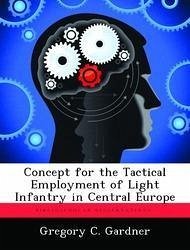There has recently been much discussion in western military journals concerning the use of light infantry forces in Central Europe. Many authors have indicated that defense of restricted terrain and urban areas are the most suitable missions for Light Infantry Divisions in that theater. This monograph argues that those missions are not appropriate. In a high intensity conflict, light infantry units must be employed offensively in accordance with a tactical style more suited to their training and organization. This paper initially describes the tactical style of light infantry forces in general. It then focuses on the Army's Light Infantry Divisions and examines how and why they have adopted that method of fighting. A critical study then details the use and misuse of light forces since the beginning of World War II. Lessons from that analysis are used to develop a concept for the employment of light infantry in Central Europe. The primary conclusion of this monograph is that our Light Infantry Divisions must operate in Europe in the same way that they intend to fight in a low intensity conflict. That is, they must be offensively oriented and fight in an unconventional style that focuses on disrupting rather than destroying the enemy. Our doctrine must reflect that light infantry forces operate in this manner. A secondary conclusion concerns our lack of infantry in Europe. Since defensive missions in high intensity warfare require conventional dismounted infantry, the Army should bring more regular infantry divisions back into the force structure.








